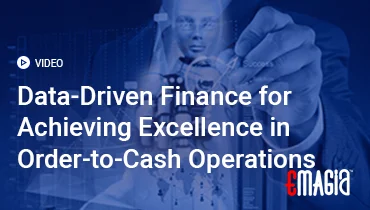Introduction
In today’s fast-paced financial landscape, manual credit review processes are becoming increasingly obsolete. The need for speed, accuracy, and efficiency has led to the adoption of automated credit review systems. These systems leverage advanced technologies to assess creditworthiness, reduce risks, and enhance decision-making. This comprehensive guide delves into the intricacies of automating credit reviews, exploring its benefits, implementation strategies, and the transformative impact it has on financial institutions.
Understanding Automated Credit Reviews
What Are Automated Credit Reviews?
Automated credit reviews involve the use of technology to assess an individual’s or business’s creditworthiness without manual intervention. These systems analyze various data points, including credit scores, financial statements, and payment histories, to make informed lending decisions. By automating this process, organizations can expedite credit assessments, reduce errors, and improve overall efficiency.
The Evolution of Credit Assessment
In the past, evaluating credit was a labor-intensive process that took considerable time and was susceptible to mistakes made by humans. With the advent of digital technologies, the process has evolved significantly. Modern automated systems utilize artificial intelligence (AI) and machine learning algorithms to analyze vast amounts of data swiftly and accurately. This evolution has not only streamlined operations but also enhanced the accuracy of credit evaluations.
Key Components of Automated Credit Review Systems
Data Collection and Integration
Automated systems gather data from various sources, including credit bureaus, financial institutions, and internal databases. Integrating this data provides a comprehensive view of an applicant’s financial health, enabling more accurate assessments.
Credit Scoring Models
Advanced credit scoring models analyze collected data to assign credit scores. These models consider factors such as payment history, debt levels, and credit utilization to determine creditworthiness. Machine learning algorithms continuously refine these models for improved accuracy.
Decision Engines
Decision engines apply predefined rules and criteria to credit scores and other data points to make lending decisions. These engines ensure consistency and compliance with regulatory standards while allowing for customization based on organizational policies.
Monitoring and Reporting Tools
Automated systems include monitoring tools that track credit performance over time. Reporting features provide insights into portfolio health, risk exposure, and compliance, facilitating proactive management.
Benefits of Automating Credit Reviews
Enhanced Efficiency
Automated systems significantly reduce the time required for credit assessments. By eliminating manual processes, organizations can process more applications in less time, improving customer satisfaction and operational throughput.
Improved Accuracy
Automation minimizes human errors associated with manual data entry and analysis. Consistent application of rules and models ensures more accurate and reliable credit evaluations.
Risk Mitigation
By analyzing a broader range of data points and utilizing predictive analytics, automated systems can better identify potential risks, enabling organizations to make informed lending decisions and reduce default rates.
Regulatory Compliance
Automated systems can be programmed to adhere to regulatory requirements, ensuring that credit assessments comply with legal standards and reducing the risk of non-compliance penalties.
Implementing Automated Credit Review Systems
Assessing Organizational Needs
Before implementation, organizations should evaluate their specific needs, including the volume of credit applications, risk tolerance, and regulatory environment. This assessment guides the selection and customization of appropriate automated solutions.
Selecting the Right Technology
Choosing a suitable automated credit review system involves considering factors such as scalability, integration capabilities, user-friendliness, and vendor support. Organizations should opt for solutions that align with their operational goals and technological infrastructure.
Data Migration and Integration
Implementing an automated system requires migrating existing data and integrating various data sources. Ensuring data accuracy and consistency during this phase is crucial for the effectiveness of the automated system.
Staff Training and Change Management
Successful implementation involves training staff to use the new system effectively. Change management strategies should address potential resistance and facilitate a smooth transition to automated processes.
Challenges and Considerations
Data Privacy and Security
Handling sensitive financial data necessitates robust security measures. Organizations must ensure that automated systems comply with data protection regulations and implement safeguards against breaches.
Algorithmic Bias
Automated systems rely on algorithms that may inadvertently perpetuate biases present in historical data. Regular audits and updates of these algorithms are essential to ensure fairness and prevent discriminatory practices.
Integration with Existing Systems
Integrating new automated systems with existing IT infrastructure can be complex. Organizations should plan for potential compatibility issues and allocate resources for necessary adjustments.
Cost Implications
While automation offers long-term savings, initial implementation costs can be significant. Organizations must weigh these costs against anticipated benefits to determine the feasibility of automation.
How Emagia Transforms Credit Review Automation
Emagia offers AI-powered credit automation solutions that revolutionize the credit review process. By leveraging advanced analytics and machine learning, Emagia’s platform enables real-time credit assessments, reducing approval times and enhancing decision accuracy. The system integrates seamlessly with existing financial infrastructures, providing a scalable and customizable solution for businesses of all sizes. Emagia’s commitment to data security and compliance ensures that organizations can automate credit reviews confidently and responsibly.
Frequently Asked Questions
What is an automated credit review?
An automated credit review is a technology-driven process that assesses an individual’s or business’s creditworthiness using algorithms and data analysis, minimizing manual intervention.
How does automation improve credit assessments?
Automation enhances credit assessments by increasing efficiency, reducing errors, and providing consistent, data-driven evaluations, leading to more accurate lending decisions.
Are automated credit reviews secure?
Yes, reputable automated systems incorporate robust security measures to protect sensitive financial data and comply with data protection regulations.
Can automated systems adapt to regulatory changes?
Automated credit review systems can be updated to reflect changes in regulatory requirements, ensuring ongoing compliance and reducing the risk of non-compliance penalties.
What industries benefit most from automated credit reviews?
Industries with high volumes of credit transactions, such as banking, finance, and retail, benefit significantly from the efficiency and accuracy of automated credit review systems.
Conclusion
Automating credit reviews is a strategic move for organizations seeking to enhance efficiency, accuracy, and compliance in their credit assessment processes. By embracing advanced technologies and addressing implementation challenges proactively, businesses can transform their credit operations, mitigate risks, and achieve sustainable growth. Solutions like Emagia exemplify the potential of automation in revolutionizing credit reviews, offering scalable, secure, and intelligent platforms tailored to modern financial needs.



